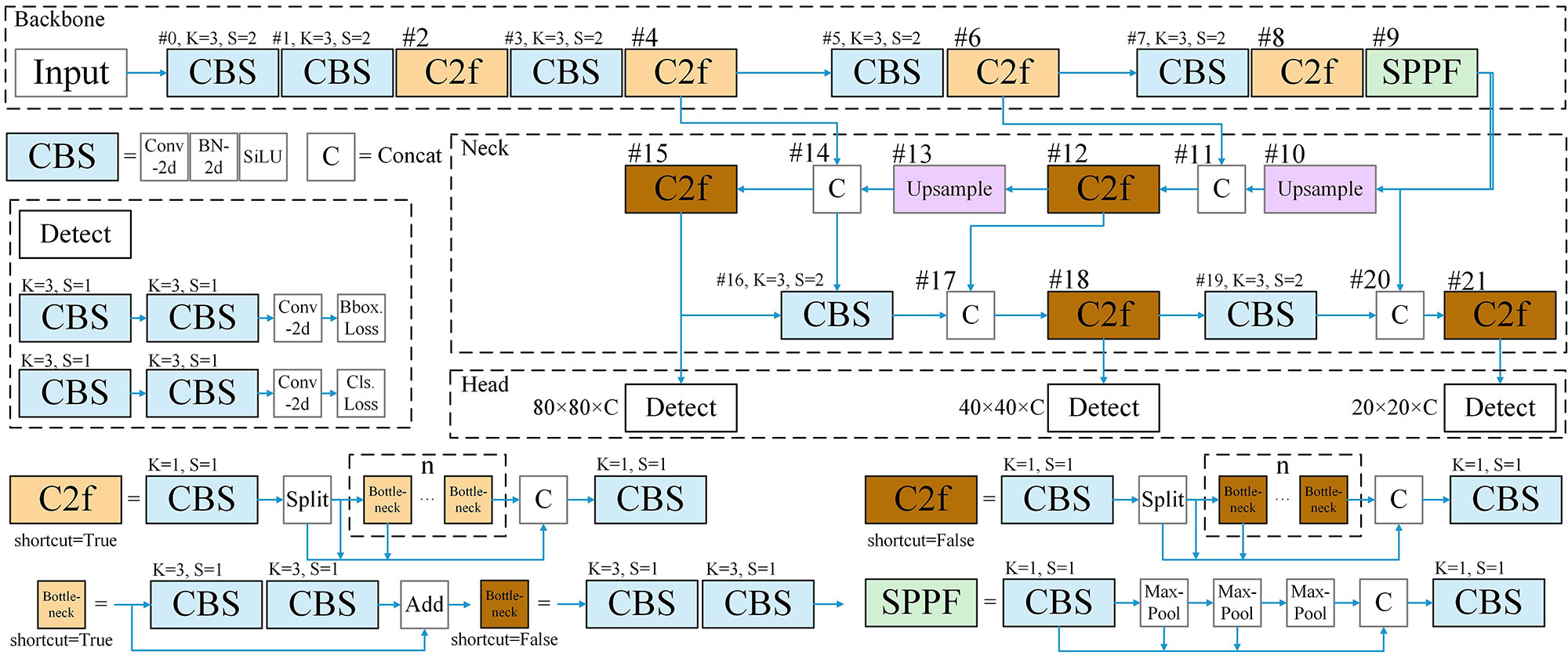Abstract
Sea ice detection is of vital importance for maritime navigation. Satellite imagery is a crucial medium for conveying information about sea ice. Currently, most sea ice detection models mainly rely on texture information to identify sea ice in satellite imagery, while ignoring sea ice size information. This research presents an improved YOLOv8-Based detection algorithm for multi-scale sea ice. First, we propose a fusion module based on the attention mechanism and use it to replace the Concat module in the YOLOv8 network structure. Second, we conduct an applicability analysis of the bounding box regression loss function in YOLOv8 and ultimately select Shape-IoU, which is more suitable for sea ice, as the loss function for bounding box regression. Third, we analyze the distribution characteristics of sea ice with different sizes in the NWPU-RESISC45 dataset. Based on these distribution characteristics, the bounding box information predicted by YOLOv8 are converted into evidence vectors for uncertainty quantification. Subsequently, information fusion is achieved by fusing these vectors with the probability of sea ice categories. Compared to YOLOv8 and other detection algorithm, our improved YOLOv8 achieves better detection accuracy on both the NWPU-RESISC45 and the Landsat-8-derived Sea Ice datasets.
Data Availability Statement
The datasets used in this work include: (1) the publicly available NWPU-RESISC45 remote sensing benchmark dataset, accessible via Baidu Wangpan at http://pan.baidu.com/s/1mifR6tU; and (2) our Landsat-8-derived Sea Ice detection dataset processed from Landsat 8 OLI/TIRS imagery, which has been made publicly available on GitHub at https://github.com/LiuYang0911/A-Proprietary-Visible-Light-based-Sea-Ice-Dataset.
Funding
This work was supported in part by the National Natural Science Foundation of China under Grant 62072392 and Grant 62272405; in part by the Shandong Natural Science Foundation of China under Grant ZR2020QF010; in part by the Yantai City Science and Technology Innovation Development Program - Basic Research Category Projects under Grant 2024JCYJ038.
Conflicts of Interest
Yiping Luo is an employee of Deep Space Exploration Laboratory, Hefei 230000, China.
Ethical Approval and Consent to Participate
Not applicable.
Cite This Article
APA Style
Liu, Y., Guo, Q., Dong, C., & Luo, Y. (2025). An Improved YOLOv8-Based Detection Model for Multi-Scale Sea Ice in Satellite Imagery. Chinese Journal of Information Fusion, 2(1), 79–99. https://doi.org/10.62762/CJIF.2025.695812
Publisher's Note
IECE stays neutral with regard to jurisdictional claims in published maps and institutional affiliations.
Rights and permissions

Copyright © 2025 by the Author(s). Published by Institute of Emerging and Computer Engineers. This article is an open access article distributed under the terms and conditions of the Creative Commons Attribution (CC BY) license (
https://creativecommons.org/licenses/by/4.0/), which permits use, sharing, adaptation, distribution and reproduction in any medium or format, as long as you give appropriate credit to the original author(s) and the source, provide a link to the Creative Commons licence, and indicate if changes were made.


 Submit Manuscript
Edit a Special Issue
Submit Manuscript
Edit a Special Issue

 Copyright © 2025 by the Author(s). Published by Institute of Emerging and Computer Engineers. This article is an open access article distributed under the terms and conditions of the Creative Commons Attribution (CC BY) license (https://creativecommons.org/licenses/by/4.0/), which permits use, sharing, adaptation, distribution and reproduction in any medium or format, as long as you give appropriate credit to the original author(s) and the source, provide a link to the Creative Commons licence, and indicate if changes were made.
Copyright © 2025 by the Author(s). Published by Institute of Emerging and Computer Engineers. This article is an open access article distributed under the terms and conditions of the Creative Commons Attribution (CC BY) license (https://creativecommons.org/licenses/by/4.0/), which permits use, sharing, adaptation, distribution and reproduction in any medium or format, as long as you give appropriate credit to the original author(s) and the source, provide a link to the Creative Commons licence, and indicate if changes were made. 